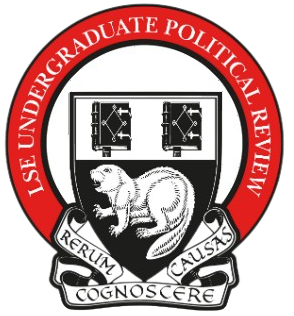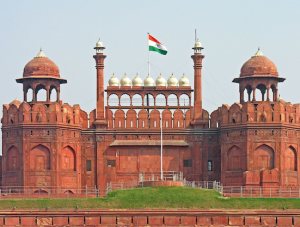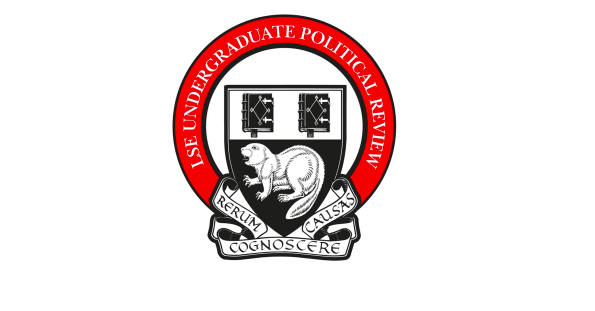Tridib Bhattacharya
Rabindranath Tagore once wrote of India as “many countries packed in one geographical receptacle” (Tagore 2017[1917]:592), and the present-day state is often termed an “unnatural nation” (Khilnani 2016[1997]:xiv). This essay compares and contrast two conflicting notions of ‘Indian identity’, as put forth by the Indian nationalist and Hindu nationalist schools of thought. Given that the nation-state was essentially a European invention and modern nationalism is a Western idea (see Anderson 2012:4; Sharma in The Wire 2017), I specifically focus on how Western political thought in particular influenced key thinkers on both sides.
In the interest of brevity, I adapt the mainstream Indian National Congress view of Indian nationalism as represented by Jawaharlal Nehru and Mahatma Gandhi, while similarly relying on their preeminent Hindu nationalist counterparts, V. D. Savarkar and M. S. Golwalkar. The analysis will thus examine the two nationalisms as formulated by these thinkers.
The Indian nationalist ideology emerged in response to British colonial rule. Indian nationalism as articulated by Nehru and Gandhi was a civic nationalism, asserting itself in the name of every Indian across religious divides (Anand 2011:10). Traditionally, potential contradictions between religion and the state have been addressed by devising a secular political arrangement, and the postcolonial Indian state accordingly formulated a distinctive rationalist secular policy. As elaborated upon by Rajeev Bhargava, this involved the state acknowledging and safeguarding its different religions while upholding an officially neutral stance; the state thereby maintained a “principled distance” with religion (Bhargava 2002:2). This was an evident recognition and acknowledgement of India’s ethnoreligious diversity. Indeed, Nehru viewed Indian civilisation ’s history of cultural assimilation as its defining feature, comparing India to an “ancient palimpsest on which layer upon layer of thought and reverie had been inscribed, and yet no succeeding layer had completely hidden or erased what had been written previously” (Nehru in Khilnani 2008:v).
Indian nationalism can therefore be considered a form of territorial nationalism (Berglund 2004), wherein all individuals inhabiting the state’s political borders are deemed to be not only citizens but also members of the nation. Thomas Hansen makes an important point in stating that Indian secularism’s acknowledgement of various faiths does not imply the total removal of religion from the political arena, but rather elevates it to an evidently apolitical pedestal (Hansen 1999:11). After all, as Christophe Jaffrelot (2019:52) points out, it was communalism that Nehru and Gandhi stridently resisted and not religion per se.
Hindu nationalist thought rose as a reactionary force opposed to the Congress’ nationalism. Hindutva (“Hindu-ness”) is a majoritarian form of nationalism, asserting its ethnoreligious legitimacy by envisioning India as a Hindu rashtra (Hindu nation-state) (Anand 2011:10). Here, a Hindu according to Savarkar’s conception is someone whose fatherland and holy land both lie in India (Savarkar 1969[1923]:113). This excludes the Muslim and Christian communities, whose holiest sites of worship are located in West Asia. These religious minorities are thus considered intrinsically ‘foreign’ and expected to defer to Hindu cultural symbols (Jaffrelot 2007:15); Golwalkar wrote that minorities should reside in India “claiming nothing, deserving no privileges…not even citizen’s rights” (Golwalkar in Tharoor 2018). A singular Hindu culture is favoured over Nehru and Gandhi’s composite cultural ontology, with Savarkar (1969:134) claiming that with the exception of China, no other country is as “homogenous” as India. Hindutva is essentially a classic case of ethnic nationalism (Leidig 2020), best exemplified by Savarkar’s maxim ‘Hindu, Hindi, Hindustan’ which exemplifies the superimposing of religion, language, sacred territory, and culture.
According to Hindutva, the Congress’ nationalism obfuscates India’s ‘real’ Hindu character; the secular state is deemed a “culturally alien” imposition (Hansen 1999:11). In this sense, Hindutva’s self-conception is that of the ‘true’ Indian nationalist thought. By disregarding individual identities in favour of a communitarian cultural framework, Hindutva takes on a deterministic nature. We can view it as an amalgamation of cultural and territorial notions of nationalism, with an emphasis on the former.
Although Hindutva’s proponents insist that the term “Hindu” has solely cultural connotations, it is regularly employed within religious, confessional contexts. The works of Savarkar and Golwalkar in particular reveal an entrenched animosity to Islam, thereby conflating religion and culture in a manner unseen in Indian nationalism (Vaishnav 2019:9). Hindutva may therefore proclaim to be an assertion of the Hindu self yet draws meaning only by ‘othering’ minorities (Anand 2011:13-14).
Furthermore, in the global south, the very idea of nationalism itself was adopted from the global north by indigenous anticolonial movements (see Upreti 2006). As we have seen, it was no different in the Indian context with the Congress at the forefront of the independence struggle. However, Western political thought itself is not homogenous and Indian nationalist and Hindu nationalist thinkers were inspired by two of its polar opposite strands in formulating their ideas of India.
The significant influence of Western political thought on Indian nationalist leaders has been well documented, the most prominent influence arguably coming from classical liberal thinkers including John Stuart Mill, Jeremy Bentham, and Auguste Comte (Dasgupta 2019). Indeed, Nehru’s formulation of a nation-building process grounded in the identity of the individual rather than the group was inherently liberal in character. The Congress’ notion of secularism, with its embrace of all religions, can also be seen as protecting the rights and freedoms of the individual as paramount in liberal thought. This idea of Indian secularism itself was derived from its European counterpart laïcité, albeit modified to suit the local context (see Pardesi and Oetken 2008; Sathyamurthy 1997).
More generally, broader Western ideals of democracy, equality, and modernity had a fundamental effect on the Western-educated Indian nationalist elite. A normative influence on Nehru and Gandhi was the work of 19th century Italian nationalist Giuseppe Mazzini, who argued for a European political order founded on the principles of democracy and national self-determination (Recchia and Urbinati 2009:1-2; Parel 1997:xlvi-xlvii). An entire chapter of Gandhi’s ‘Hind Swaraj’ is in fact dedicated to Italy. The resultant state envisioned by Indian nationalism could in many ways be called a liberal democracy, with its emphasis on representative political institutions and processes, religious tolerance, and cultural pluralism. Sunil Khilnani perhaps sums it up best in stating that this conception of India based on the universal virtues of peace, liberalism, and rationalism was “unequivocally a creation of the modern world” (Khilnani 2016:5).
Coming to Hindu nationalism, Savarkar’s equivalence of India’s territorial and cultural (as well as religious) boundaries was modelled on the ethnically and linguistically homogenous European nation-state (Jaffrelot 2007:15; Vaishnav 2019:10). Hindutva’s conception of a unitary Hindu culture aligns with the monochromatic nature of European civilizational identity and its modular form of nation (Chakrabarty and Jha 2020:5); the idea of cultural unity specifically echoes the German notion of Volksgeist (‘national sprit’). Savarkar’s ‘Hindi, Hindu, Hindustan’ maxim effectively mirrors 19th and 20th century European nationalisms based on common language, religious identity, racial unity, and sacred territory.
Moreover, Savarkar and Golwalkar were both oriented towards the Italian and German fascist regimes during the 1920s and 1930s, and Hindutva emerged through sustained dialogue with 20th century European fascism (see Bhatt 2020; Leidig 2020). Hindutva’s entrenched Islamophobia and general hostile attitude towards minorities is moulded on Adolf Hitler’s treatment of Jews, with Golwalkar calling Germany’s anti-Semitic policies “a good lesson for…Hindustan to learn and profit by” (Golwalkar in Bhattacharjee 2019). This fascist inclination also meant that Golwalkar dismissed the democracy which Indian nationalism championed as giving “too much freedom” to individuals (Guha 2016); a modern democratic state was seen as diverging from the Hindu rashtra ideal (Bhattacharjee 2019).
Finally, an oft-overlooked aspect of Hindutva is its connection to Orientalist thought. Savarkar and Golwalkar’s work subscribes to Orientalist stereotypes that view Indian Muslims as a monolith and reduce them to their perceived ‘foreignness’, besides envisioning a reductionist singular Hindu culture. Clashes between Hindus and Muslims and communal violence are portrayed as almost primordial in their naturalness and apparent inevitability, another feature of Orientalist narratives (Anand 2011:5-6).
Thus, every nationalism creates a predominant national identity and produces universalising conceptions of citizenship, but as we saw the identities and citizenship constructed by Indian and Hindu nationalism are distinctly different. Nationalism has been called an ideological construct aimed at fulfilling a certain political objective, and it could be interesting to consider the political consequences of Indian and Hindu nationalist thought.
Furthermore, given the primacy of Western political thought in both nationalisms and general colonial legacy of nationalist movements, it is pertinent to consider how this influences epistemic questions around decolonising the intellect. Additionally, various schools of thought exist within Indian nationalism and Hindu nationalism themselves – for instance parts of Gandhi’s political thought are amenable to Hindu readings (see Parekh 1989:109; Jaffrelot 2007:14) – and a more detailed study could also examine these viewpoints and their implications.
References
Anand, Dibyesh. 2011. Hindu Nationalism in India and the Politics of Fear. New York: Palgrave Macmillan.
Anderson, Benedict. 1983. Imagined Communities: Reflections on the Origin and Spread of Nationalism. London and New York: Verso.
Banerjee, Sumanta. 1991. “Hindutva’: Ideology and Social Psychology”. Economic and Political Weekly 26(3): 97-101.
Bapu, Prabhu. 2013. Hindu Mahasabha in Colonial North India, 1915-1930: Constructing Nation and History. Oxford and New York: Routledge.
Battaglia, Gino. 2017. “Neo-Hindu Fundamentalism Challenging the Secular and Pluralistic Indian State” Religions 8(216).
Berglund, Henrik. 2004. “Religion and Nationalism: Politics of BJP”. Economic and Political Weekly 39(10); 1064-1070.
Bhagavan, Manu. 2008. “The Hindutva Underground: Hindu Nationalism and the Indian National Congress in Late Colonial and Early Post-Colonial India”. Economic and Political Weekly 43(37): 39-48.
Bhargava, Rajiv. 2002. “What is Indian secularism and what is it for?”. India Review 1(1): 1-32.
Bhatt, Chetan. 2020 [2001]. Hindu Nationalism: Origins, Ideologies and Modern Myths. Oxford and New York: Routledge.
Bhattacharjee, Manash Firaq. 2019. “Golwalkar’s Idea of Culture as War Drives BJP’s Scorn for Democracy and Minorities”. The Wire (accessed 9 April 2021), < https://thewire.in/politics/golwalkars-idea-of-culture-as-war-drives-bjps-scorn-for-democracy-and-minorities>.
Blank, Jonah. 2019. “How Hinduism Became a Political Weapon in India”. The Atlantic, (accessed 7 February 2021), <https://www.theatlantic.com/international/archive/2019/05/hindu-nationalism-narendra-modi-india-election/590053/>.
Carlisle, Madeleine. 2019 “What to Know About the Origins of ‘Left’ and ‘Right’ in Politics, From the French Revolution to the 2020 Presidential Race”. Time (accessed 11 February 2021), < https://time.com/5673239/left-right-politics-origins/>.
Chakrabarty, Bidyut and Jha, Bhuwan Kumar. 2020. Hindu Nationalism in India: Ideology and Politics. Oxford and New York: Routledge.
Dasgupta, Swapan. 2019. “What elements does India’s nationalist conservative politics draw from its counterparts in the West?”. Scroll.in (accessed 10 April 2021), <https://scroll.in/article/927420/what-elements-does-indias-nationalist-conservative-politics-draw-from-its-counterparts-in-the-west>.
Greetz, Clifford. 1963. “The Integrative Revolution: Primordial Sentiments and Civil Politics in the New States”. In Old Societies and New States, edited by Clifford Geertz, 105-57. Glencoe: Free Press.
Girvin, Brian. 2020. “From Civic Pluralism to Ethnoreligious Majoritarianism: Majority Nationalism in India”, Nationalism and Ethnic Politics 26(1): 27-45.
Guha, Ramachandra. 2016. “A question of sources”. The Telegraph India (accessed 9 April 2021), < https://www.telegraphindia.com/opinion/a-question-of-sources/cid/1453219>.
Hansen, Thomas Blom. 1999. The Saffron Wave: Democracy and Hindu Nationalism in Modern India. Princeton: Princeton University Press.
Jaffrelot, Christophe. 2007. Hindu Nationalism: A Reader. Princeton: Princeton University Press.
Jaffrelot, Christophe. 2019. “The Fate of Secularism in India”. In The BJP in Power: Indian Democracy and Religious Nationalism, edited by Milan Vaishnav, 51-62. Washington DC: Carnegie Endowment for International Peace.
Khilnani, Sunil. 2016[1997]. The Idea of India. India: Penguin Books.
Leidig, Eviane. 2020. “Hindutva as a variant of right-wing extremism”. Patterns of Prejudice 54(3): 215-237.
Nehru, Jawaharlal. 2008[1946]. The Discovery of India. India: Penguin Random House.
Pardesi, Manjeet S. and Oetken, Jennifer L. 2008. “Secularism, Democracy, and Hindu Nationalism in India”. Asian Security 4(1): 23-40.
Parekh, Bhikhu. 1989. Gandhi’s Political Philosophy: A Critical Examination. Basingstoke and London: Macmillan.
Parel, Anthony J., ed. 2009[1997]. Gandhi: ‘Hind Swaraj’ and Other Writings. New York: Cambridge University Press.
Recchia, Stefano and Urbinati, Nadia, eds. 2009. A Cosmopolitanism of Nations: Giuseppe Mazzini’s Writings on Democracy, Nation Building, and International Relations. Princeton: Princeton University Press.
Sahoo, Niranjan. 2020. “Mounting Majoritarianism and Political Polarization in India”. In Political Polarization in South and Southeast Asia: Old Divisions, New Dangers, edited by Thomas Carothers and Andrew O’Donohue, 9-24. Washington DC: Carnegie Endowment for International Peace.
Shastri, Amita and Wilson, Jeyaratnam A., eds. 2001. The Post-Colonial States of South Asia. New York: Palgrave Macmillan.
Sathyamurthy, T. V. 1997. “Indian Nationalism: State of the Debate”. Economic and Political Weekly 32(14): 715-721.
Savarkar, Vinayak Damodar. 1969[1923]. Hindutva: Who is a Hindu? Bombay: Veer Savarkar Prakashan.
Tagore, Rabindranath. 2017. The Definitive Tagore. Faridabad: Rupa Publications India.
Tharoor, Shashi. 2018. “How former RSS head M.S. Golwalkar saw India and wanted to treat minorities”. ThePrint (accessed 10 April 2021), <https://theprint.in/pageturner/excerpt/nationalism-golwalkars-head-of-rss-three-decades/31781/>.
The Wire. 2017. “Golwalkar’s Vision Is Terrifying Because It Has No Place for Modern Democratic Politics”. The Wire (accessed 9 April 2021), <https://thewire.in/communalism/ms-golwalkar-icpr-terrifying-vision>.
Upreti, B. C. 2006. “Nationalism in South Asia: Trends and Interpretations”. Indian Journal of Political Science 67(3): 535-544.
Vaishnav, Milan. 2019. “Religious Nationalism and India’s Future”. In The BJP in Power: Indian Democracy and Religious Nationalism, edited by Milan Vaishnav, 5-22. Washington DC: Carnegie Endowment for International Peace.
Cover Image Source: Red Fort – Closer view of the top part of the gate above the Meena Bazaar by Dennis Jarvis from Halifax, Canada via Wikimedia Commons
The author, Tridib Bhattacharya, is a final year undergraduate at SOAS University of London. He is studying towards a degree in International Relations and Economics.






